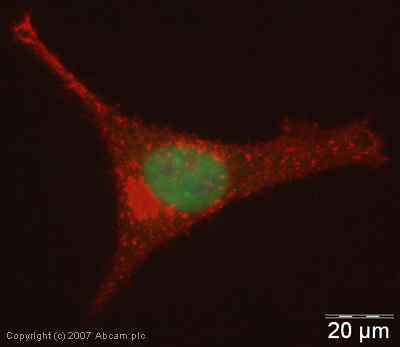Anti-hnRNP R antibody
| Name | Anti-hnRNP R antibody |
|---|---|
| Supplier | Abcam |
| Catalog | ab30930 |
| Prices | $380.00 |
| Sizes | 100 µg |
| Host | Rabbit |
| Clonality | Polyclonal |
| Isotype | IgG |
| Applications | ICC/IF ICC/IF IHC-P WB |
| Species Reactivities | Mouse, Rat, Human, Zebrafish |
| Antigen | Synthetic peptide conjugated to KLH derived from within residues 600 to the C-terminus of Human hnRNP R |
| Description | Rabbit Polyclonal |
| Gene | HNRNPR |
| Conjugate | Unconjugated |
| Supplier Page | Shop |
Product images
Product References
The heterogeneous nuclear ribonucleoprotein-R is necessary for axonal beta-actin - The heterogeneous nuclear ribonucleoprotein-R is necessary for axonal beta-actin
Glinka M, Herrmann T, Funk N, Havlicek S, Rossoll W, Winkler C, Sendtner M. Hum Mol Genet. 2010 May 15;19(10):1951-66.
Regulation of post-translational protein arginine methylation during HeLa cell - Regulation of post-translational protein arginine methylation during HeLa cell
Kim C, Lim Y, Yoo BC, Won NH, Kim S, Kim G. Biochim Biophys Acta. 2010 Sep;1800(9):977-85.
Proteomic identification and comparative analysis of asymmetrically - Proteomic identification and comparative analysis of asymmetrically
Lim Y, Hong E, Kwon D, Lee E. Electrophoresis. 2010 Dec;31(23-24):3823-33.
Identification of a heterogeneous nuclear ribonucleoprotein-recognition region in - Identification of a heterogeneous nuclear ribonucleoprotein-recognition region in
Hadian K, Vincendeau M, Mausbacher N, Nagel D, Hauck SM, Ueffing M, Loyter A, Werner T, Wolff H, Brack-Werner R. J Biol Chem. 2009 Nov 27;284(48):33384-91.



